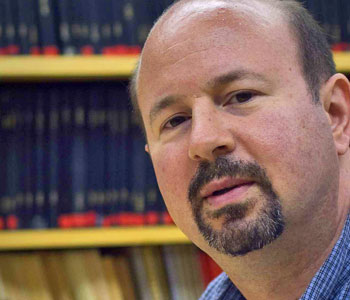Charles A. Kupchan
Isolationism: A History of America’s Efforts to Shield Itself From the World
Oxford University Press
464 pages, 6 x 9 1/4 inches
ISBN 978 0199393022
This is the first book to tell the fascinating story of American isolationism across the full arc of U.S. history. The United States that we know today has dominated global affairs ever since it entered World War II in 1941. But for much of its history, the nation steered clear of strategic commitments beyond North America. From the founding era until the Japanese attack on Pearl Harbor, Americans sought to run away from the world, not run it. They were avid international traders from the nation’s earliest days, yet apart from detours during the Spanish-American War and World War I, they shunned strategic entanglement outside their own neighborhood. In his 1796 Farewell Address, President George Washington set the nation on a clear course: “The great rule of conduct for us in regard to foreign nations is in extending our commercial relations, to have with them as little political connection as possible.” Thereafter, isolationism had a virtual lock on American politics.
With the United States in the midst of a bruising debate about its role in the world, Americans need to better understand the enduring connection between the isolationist impulse and the American experience. Isolationism is part and parcel of the nation’s creed, and its citizens need to know much more about their long-running aversion to foreign entanglement. To be sure, President Donald Trump’s America First brand of statecraft constituted a sharp break with the recent past. Nonetheless, it had deep roots in the nation’s history and identity. Isolationism, unilateralism, protectionism, racism—these were all defining features of America’s approach to the world from the nation’s birth well into the twentieth century. Trump harkened back to these earlier traditions in American statecraft, sensing the electorate’s discontent with international overreach—too many wars in the Middle East, too much free trade, too many immigrants, too much focus on solving the problems of others. In short, too much world, not enough America.
Yet Trump overcorrected. He should have tapped on the brakes and eased off international ambition. But he took a wrecking ball to the world America made after World War II. He insulted and estranged allies; backed away from the international teamwork needed to address global challenges in the age of inescapable interdependence; launched trade wars that did little to benefit U.S. workers; and fostered nativism and intolerance at home and abroad.
Instead, the United States needs to undertake a “judicious retrenchment” that constitutes the middle ground between doing too much and doing too little. Americans cannot afford to let dangerous overreach turn into even more dangerous underreach. The nation learned the dangers of underreach the hard way during the 1930s. It was a passive bystander amid one of history’s darkest decades, running for cover in the face of spreading fascism and militarism in both Europe and Asia.
The United States cannot afford to repeat that mistake. Yes, Americans need to carefully weigh the pros and cons of both isolationism and internationalism, seeking to bring the nation’s foreign commitments back into line with its means and purposes. But the task ahead is to step back, without stepping away—to do less, but to still do enough.
It was during the 1990s, after the end of the Cold War, that I first contemplated writing a book about the history of isolationism. During that decade, Americans seemed to be losing interest in foreign affairs; coverage of international news in the media fell off a cliff. The terror attacks of 9/11 abruptly ended the nation’s inward turn and all eyes focused on the ensuing conflicts in the Middle East. But U.S. wars in Afghanistan, Iraq, Libya, and Syria produced little good even as they cost many lives and trillions of dollars. The American electorate justifiably soured on what appeared to be unlimited foreign entanglements. A book on America’s isolationist temptation was indeed in order. I embarked on the task in 2012. The topic became all the more relevant on January 20, 2017, when Trump laid out his America First doctrine in his Inaugural Address: “From this day forward, a new vision will govern our land. From this moment on, it’s going to be America First.”
The more history I read as I researched this work, the more it became clear that my book would challenge the conventional wisdom on multiple fronts. Isolationism, despite the dirty name that it deservedly acquired during the interwar era, long dominated U.S. statecraft because it served the nation well. The avoidance of foreign entanglement cleared the way for America’s unmolested ascent during the nineteenth century—as George Washington and his colleagues had foreseen. Americans need to rediscover an enduring piece of wisdom handed down by the Founders: Under the right circumstances, standing apart from trouble abroad can constitute the best statecraft.
I also offer in the book a reinterpretation of American exceptionalism. Americans have long deemed their democratic experiment to be exceptional, obliging them to spread liberty to all quarters of the globe. Even before the country’s birth, the passionate advocate of independence from Great Britain, Thomas Paine, counseled American colonists that “we have it in our power, to begin the world all over again.” But for much of the nation’s history, most Americans envisaged changing the world only by the power of their example. They believed that preserving their unique experiment in political and economic liberty required standing aloof from the perils and corrupting influences that lay beyond the nation’s shores.
That all changed after the nation’s entry into World War II. Since the 1940s, belief in the unique character of America’s democratic experiment has served as the ideological foundation for foreign ambition. The United States is the “indispensable nation,” obligating it to project its power to all quarters of the globe in the service of spreading republican values and institutions and defending and expanding Pax Americana. This sense of messianic mission helped the country stay the course and prevail in the Cold War. But it also laid a foundation for economic and strategic overreach once the Cold War was over. The United States embraced an unfettered brand of globalization that worked to the advantage of too few Americans. Washington embarked on expensive and futile attempts to turn Afghanistan and Iraq into Ohio. These bouts of ideological overreach set the stage for an isolationist backlash and Trump’s America First brand of statecraft. As I note, “The United States seems to be coming full circle (...). How far back in the direction of isolationism the pendulum swings remains to be seen” (page 23).
I would encourage readers to start with the Preface. There they will find a concise summary of the intellectual journey that prompted me to write Isolationism and of the book’s aims. “My main objective in writing this book is to provide readers a go-to volume for understanding American isolationism. I aim, in accessible fashion, to tell the story of America’s efforts to shield itself from the world—from the founding era through the Trump presidency” (page xiv). Much of the book looks back at the nation’s history, but I also use that history to explore the present and future: “America’s isolationist past does have much to teach us about the nation’s current geopolitical predicament” (page xii). I would also encourage readers to skim pages 8-28. This section provides an overview of book’s main arguments and the flow of the historical narrative.
Finally, I would urge that readers jump into one of many historical turning points explored in the book—such as the account of the anti-imperialist backlash against the Spanish-America War of 1898 (pages 197-205). When President William McKinley launched a war to expel Spain from Cuba, he claimed he was acting “in the cause of humanity.” The U.S. Navy handily defeated the Spanish fleet in the Caribbean and Pacific, and proceeded to wrest control of Cuba, Puerto Rico, Hawaii, the Philippines, Guam, Samoa, and the Wake Islands. McKinley called the annexation of Hawaii “manifest destiny” and portrayed the military occupation of the Philippines as a “holy cause,” explaining that “there was nothing left for us to do but to take them all, and to educate the Filipinos, and uplift and civilize and Christianize them.”
Many Americans didn’t buy it—especially after a bloody insurgency broke out in the Philippines that took the lives of some 4,000 U.S. soldiers and hundreds of thousands of Filipinos. William Jennings Bryan, who ran against McKinley in the 1900 election, claimed that the nation could not “endure half republic and half colony—half free and half vassal.” William Sumner, an influential Yale professor, offered a similar critique: “Expansionism and imperialism (...) appeal to national vanity and national cupidity. They are seductive (...). They are delusions, and they will lead us to ruin unless we are hard-headed enough to resist them.”
McKinley won the 1900 election and the United States kept hold of the territories it seized in 1898. But enthusiasm for further territorial expansion evaporated, and the backlash against foreign entanglement helped clear the way for the isolationist retreat of the interwar era. The debate over American foreign policy spawned by the Spanish-American War profoundly resonates with the debates taking place today over the nature of America’s role in the world.
I hope that Isolationism leavens the global conversation that needs to take place about the nature of U.S. statecraft moving forward. Given the outsized role that the United States plays in global affairs, Americans as well as many other peoples affected by U.S. policy need a better understanding of America’s role in the world across the longue durée of the nation’s history. And we need to learn the right lessons from that history, drawing on both isolationist and internationalist traditions to find a sustainable brand of statecraft that constitutes the middle road between overreach and underreach.
I lay out a strategy of “judicious retrenchment” as a means of arriving at that middle road. I hope that the book and the debate it provokes help build intellectual and political support for this strategy. Judicious retrenchment entails ending the forever wars in the Middle East and pulling back from the region militarily—while maintaining America’s main strategic commitments in Europe and the Asia Pacific. The United States continues to have an overriding interest in managing great-power competition in Eurasia. Russia and China both pose expansionist threats to their neighbors, which means that the same objective that guided U.S. strategy during World War II and the Cold War—preventing the domination of Eurasia by a hostile power—still applies.
Less reliance on wars means more reliance on diplomacy. Judicious retrenchment entails restoring America’s role as a team player that works with other nations. Only through joint international action can we effectively address the paramount challenges of our time, including managing a globalized and interdependent economy, arresting climate change, shutting down terrorist networks, countering nuclear proliferation, promoting cybersecurity, and advancing public health. Such joint action will often require U.S. leadership to get off the ground.
And judicious retrenchment entails reclaiming America’s exceptionalist calling as a beacon of democracy. Nonetheless, the United States must return to its original conception of exceptionalism and seek to spread its republican experiment by example rather than by more forceful means. Knocking off unsavory regimes usually causes more harm than good. Russian and Iranian influence may be increasing in the Middle East as the United States pulls back from the region. But it is Washington’s foolhardy penchant for toppling regimes, not its self-restraint, that is the root cause of the inroads being made by Moscow and Tehran.
Reclaiming the nation’s original conception of exceptionalism requires more than exercising restraint and coming to terms with the reality that the United States cannot solve all the world’s problems. It also requires putting America’s own house in order. The United States cannot serve as a model for other nations when its political landscape is so deeply polarized and its institutions so dysfunctional. The first priority is to tackle the sources of the nation’s political ills, including the pandemic, inequality, racial injustice, and the profound sense of economic insecurity that pervades much of the electorate.
Exceptionalism is inseparable from the American creed. And with illiberalism and intolerance on the march globally, the world urgently needs an anchor of republican and pluralist ideals—a role that only the United States has the power and credentials to fulfill. But the exceptionalist narrative has for way too long been an excuse for doing too much abroad. Given the dilapidated state of the American experiment, the renewal of the nation’s unique calling must start at home.




We don't put paywalls. We don't distract you with ads. We don't sell your data.
Please help to keep this running!